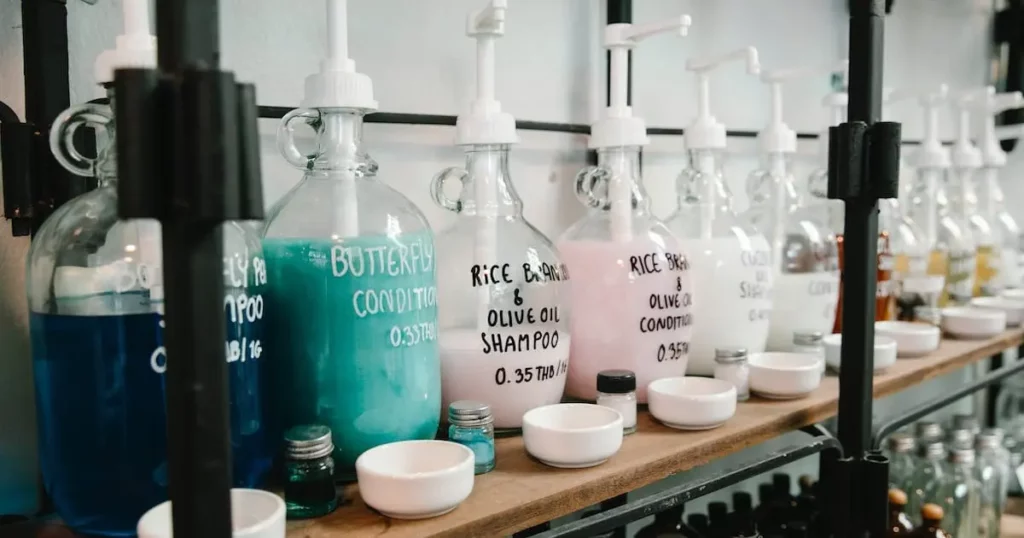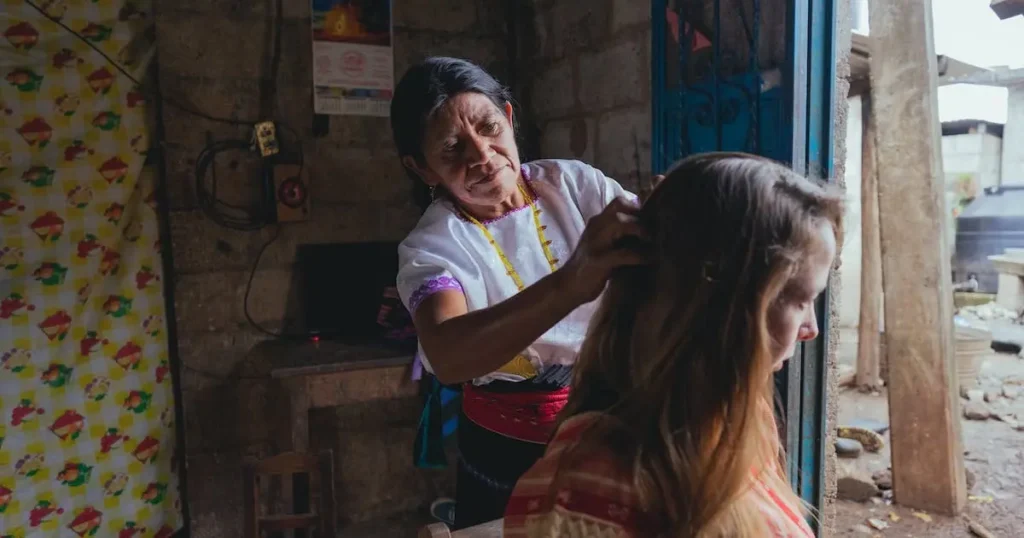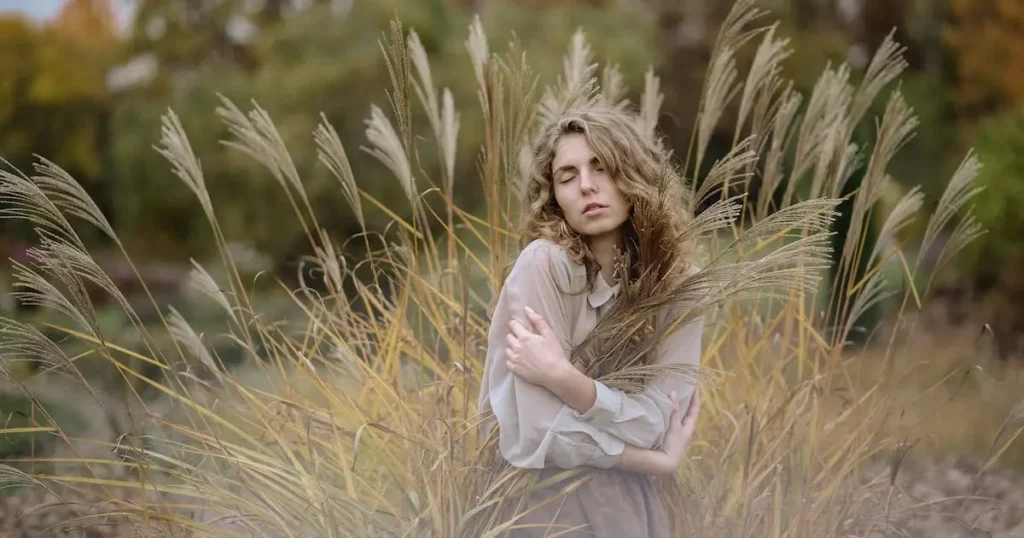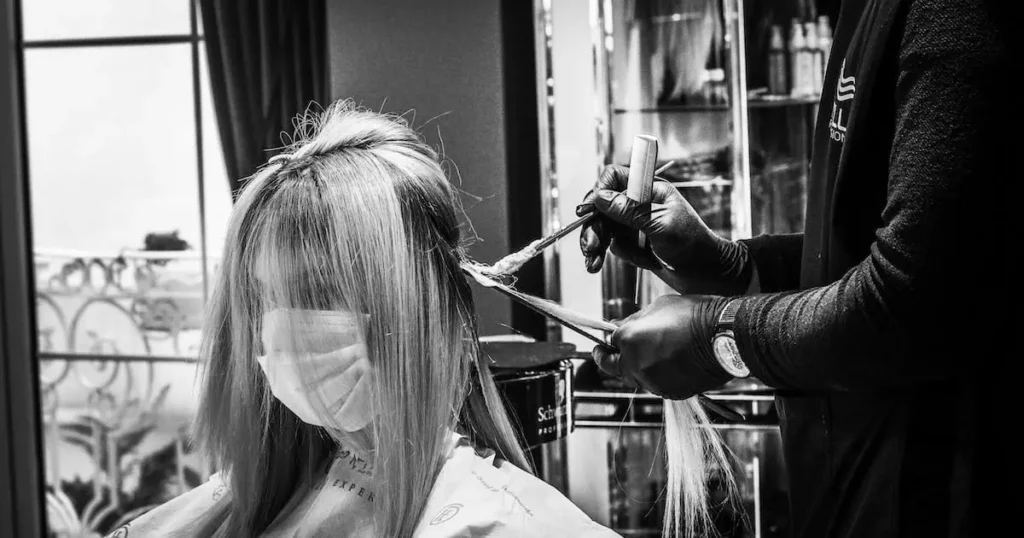A keratin treatment can help smooth and de-frizz baby hair, but occasionally some frizz may return soon after the service. There are several things parents can do to keep baby hair sleek and frizz-free in the weeks and months following the initial keratin treatment.
Why Does My Baby’s Hair Get Frizzy Again After A Keratin Treatment?
Babies have naturally finer and more fragile hair than adults. Their hair texture also changes rapidly in the first few years of life. As the new growth comes in, it may not have gotten the full benefit of the keratin treatment on the previously existing hair. Environmental factors can also affect smoothness over time. With some additional at-home care though, the frizz can be managed.
Frizzy Baby Hair Solution
Addressing frizzy baby hair requires a gentle and cautious approach to ensure the well-being of the little one. While frizz in baby hair is often a natural phase of development, some parents may seek solutions to manage and minimize its appearance.
One approach is to maintain proper hair hygiene, using mild baby shampoos and conditioners to keep the hair clean and moisturized. Additionally, applying a small amount of baby-friendly hair oil or serum can help control frizz and impart a smoother texture. It’s crucial to choose products specifically formulated for infants to avoid any potential irritation.
Gentle brushing with a soft baby brush can also aid in taming frizz while promoting a soothing bonding experience between parent and child. However, it’s essential to consult with pediatricians or dermatologists before introducing any new products, ensuring they align with the baby’s delicate skin and overall well-being.
How Long Does A Keratin Treatment Typically Last On A Baby’s Hair?
Most keratin treatments can have an effect for 2-4 months on baby hair when properly maintained. However, results vary widely based on the baby’s hair type and texture, thickness, age, rate of new growth, and other factors. The first 1-2 months will likely have the most dramatic results before some frizzing becomes noticeable.
What Are The Best Shampoos And Conditioners For Baby Hair After A Keratin Treatment?

Shampoos
- Sulfate-free baby shampoos
- Moisturizing, vitamin-enriched shampoos
- Popular options: Mustela Baby Shampoo, SheaMoisture Baby Shampoo & Wash
Conditioners
- Leave-in conditioners
- Detangling conditioners
- Deep conditioning hair masks
- Popular options: SheaMoisture Baby Conditioner, Baby Dove Detangling Conditioner
The best shampoos and conditioners will be gentle, moisturizing formulas focused on hydration, vitamins, and nutrients for the hair and scalp. Harsh soaps and detergents should be avoided.
What Styling Products Help Control Frizz In Baby Hair After Keratin Treatment?

- Serums – Argan oil, keratin, and smoothing serums help block humidity and smooth the cuticle.
- Styling creams – Leave-in conditioning creams add moisture and heat protection.
- Gels – Frizz-fighting gels reinforce smoothness when used sparingly.
- Detanglers – Gentle detangling sprays make combing easier.
- Accessories – Soft headbands, hats, and bows prevent out-of-control flyaways.
Gently massage these styling products evenly through damp hair right after washing. Use only a small amount to avoid greasiness in fine baby hair.
Top-Rated Styling Products for Babies’ Hair are:
| Product | Key Features |
|---|---|
| Baby Dove Baby Care Essentials Set | Nutrient-rich serum, detangler, and moisturizing cream |
| Fridababy Baby Hair Serum | Organic oils and keratin for conditioning, detangling, and gloss |
| SheaMoisture Coconut & Hibiscus Baby Care Set | Shampoo, conditioner, detangler, and defining cream |
| Mustela Baby Hair Detangler Spray | Gentle spray for nourished, tangle-free hair |
| Sweet Orange Baby Sparklies | Whimsical fabric headbands; variety of designs |
What Are Some Good Ways To Protect Baby Hair Overnight?
Wrap a silk or satin scarf around the baby’s head to prevent friction and minimize hair breakage. Alternatively, use a silk or satin pillowcase for a gentle and protective surface during sleep.
Sleep Styles
- Loosely tie back hair if longer – Use a soft fabric tie for a lower ponytail or simple braid
- Allow hair to dry naturally before sleep
- Change sleep position to back or side to avoid friction
Bedding
- Satin pillowcases reduce friction
- Bonnet or cap protects ends
- In cooler weather, add a satin-lined knit hat
Nighttime Products
- Light leave-in conditioner or serum
- Refreshing hair spray – lightly mist before bed
Keeping hair up loosely, letting it dry first, minimizing friction with a cap or satin, and using nourishing overnight products makes a difference.
How Often Should You Use A Deep Conditioning Hair Mask On Baby’s Hair?

- Once a week is ideal for deep conditioning
- Focus on mid-lengths to ends
- 2-5 minutes for fine or fragile hair
- Up to 10 minutes for very thick, dense, or dry hair
- Rinse out thoroughly – don’t apply too often to avoid buildup
Look for options like Shea Moisture Strengthen & Restore Masque which nourishes hair and replenishes moisture levels. Using a mask weekly prevents drying and keeps hair elasticity intact. Adjust the frequency and duration based on hair health and response.
Are Follow-Up Keratin Treatments Recommended To Maintain Results?
Follow-up keratin treatments every 2-4 months can help prolong smoothness and manageability. Each service allows the keratin to bond into new growth and refresh the results. However, chemicals should not be over-used, especially on babies and young children. Consider these factors with follow-up treatments:
- Baby’s age and hair maturity level
- Condition and integrity of hair
- Type of keratin product used
- Lifestyle factors like swim or play that affect wear
- Budget and affordability of regular salon services
- Availability of ongoing at-home smoothing options
While keratin treatments effectively control frizz and last longer with touch-ups, healthy hair habits with gentler products can also sustain improvements for baby hair. Discuss pros and cons of follow-ups with a stylist.
What Home Remedies Help With Frizzy Baby Hair?
Apply a small amount of coconut oil or shea butter to baby’s hair to naturally moisturize and tame frizz. Gently comb the hair with a wide-toothed comb to prevent further tangles and promote a smoother texture.
Natural Oils
Massaging coconut, avocado, almond, or argan oil into the hair and scalp moisturizes and creates glossy shine. Leave for 30+ minutes before washing out.
Aloe Vera Gel
Fresh aloe vera gel or store-bought 100% pure versions can smooth and define texture when used on damp hair.
Apple Cider Vinegar Rinse
A diluted ACV solution balances pH and seals the cuticle to boost shine. Always condition afterward.
Honey Mask
Both raw and Manuka honey offer hair healing vitamins and minerals when applied as a weekly mask. The humectant properties prevent moisture loss over time.
These DIY alternatives provide added hydration, frizz reduction, and longer lasting keratin treatment effects through easily available ingredients. Use them to supplement daily gentle shampoos and conditioners.
What Temperature Tools Are Safe To Use On Baby’s Hair?
If needing to briefly style with hot tools, keep the heat extremely low to prevent damage to delicate hair.
Recommended Max Temperatures:
- Hair Dryer – Low or Cool setting
- Curling Iron – 180 to 200°F
- Hair Straightener – 140 to 160°F
- Always use a heat protectant product before hot tools
Any exposure to high heat can dry out hair and remove moisture. Air drying, towel drying, or minimal heat are best whenever possible. Hot styling tools should only occasionally be used at the lowest setting if needed.
Is It Safe To Re-Apply Keratin Treatment At Home?

It is not generally recommended for parents to try DIY keratin smoothing treatments at home on babies’ hair. The process involves very strong chemicals that require careful application. Getting the percentage of solutions inaccurate or leaving product on too long risks hair damage or irritation.
Instead, opt for gentler at-home conditioning products to supplement salon keratin services. Or explore professional-quality smoothing kits made for safe at-home use on children’s hair if ongoing treatments are preferred. When in doubt though, leave chemical services to the experts.
Conclusion
While a professional keratin treatment can help smooth frizzy locks on babies and young toddlers, maintaining sleek, shiny hair still requires some work for months afterward. Gentle shampoos and conditioners lay the foundation, followed by regular deep conditioning masks and natural oils to boost moisture. Protecting hair overnight and minimizing heat styling prevents long term damage as the new growth comes in.
With some TLC using the right nourishing products and techniques, baby hair can stay manageable even as the keratin gradually wears off. Using lower-chemical DIY alternatives as supplemental conditioning also prolongs smoothness.
Discuss appropriate post-keratin care with both a pediatrician and stylist. With the right gentle haircare regimen based on your child’s unique hair type and needs, you can help them put their best locks forward as they grow. Reach out if you have any other questions!
FAQs About Keratin Treatments On Babies’ Hair
Here are answers to some frequently asked questions:
At what age can you do a keratin treatment on a baby’s hair?
There is no set age for keratin treatments. Many salons offer gentle versions starting as early as 3 months old. However, waiting until at least 1 year allows for stronger hair bonds and texture maturity. Discuss options with a pediatric stylist.
Does keratin straighten babies curly hair permanently?
No – while keratin treatments can temporarily relax curls or waves, they do not permanently alter hair texture even on babies. Natural curl pattern eventually returns as hair grows out although some loosening may last longer on very young children.
Is keratin safe for mixed race baby hair?
Keratin is safe for all hair types when formulations are designed for children and done by a professional stylist. Extra nourishment is often needed for mixed textured hair at an early age. Ensure products used won’t dry out delicate strands.
Should you condition hair before or after keratin treatment?
Always condition hair properly in preparation before a keratin service. Never condition immediately before or after except to rinse out products thoroughly. Proper cleansing allows maximum saturation and bonding during the treatment.
Does your hair remain frizzy even after undergoing a keratin treatment?
No, typically, hair becomes smoother and more manageable after a keratin treatment, significantly reducing frizz. The treatment works to enhance the overall texture and shine of the hair.
Does keratin work on babies with straw-like hair?
Yes – keratin is highly effective at rehydrating, repairing, and smoothing straw-like hair on babies. The treatment fills in gaps in the follicle structure. Follow with continual nourishing products to prevent future dryness and brittleness.
Are baby hairs, which often grow frizzy and wild post-pregnancy, a candidate for treatments like keratin or Brazilian blowout?
Yes, baby hairs that become frizzy post-pregnancy can be effectively managed with treatments such as keratin or Brazilian blowout, providing smoother and more controlled results. These treatments help tame and improve the texture of the regrown hair.
